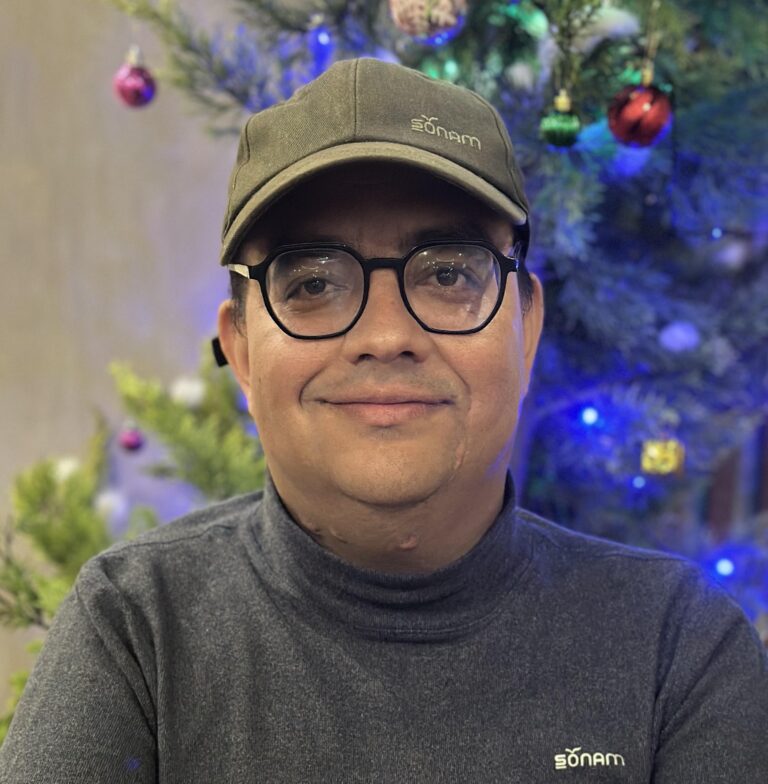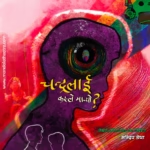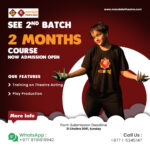I am Sagar Prasai, a wheelchair user, and this is my story. For the longest time, I’ve had difficulties in pursuing my interest in the arts—mainly because spaces like theatres and movie halls aren’t made with individuals like me in mind. However, it’s not all glum. I’ve seen how the arts and those around it are opening up to people like me. This is a story about my experiences and about the hard work and creativity of those fighting to make sure everyone, no matter their ability, is included in the arts.
I loved the arts ever since I was a child. This interest grew when a village friend introduced me to the Mandala Theatre, and it quickly became my special place. The artists and their performances were always excellent, and their fervour for storytelling brought me closer to the world of dramatic art.
But enjoying these performances wasn’t always easy. Although I could get into the theatre because it was on the ground floor, problems were aplenty, especially the absence of a wheelchair-accessible bathroom. Issues like these were a harsh reminder of the structures that aren’t designed for people like me.
I started working for disability rights in my early 20s. My experiences, such as not having what I needed at the theatre, pushed me to do this work. I met other people with disabilities who also loved theatre but couldn’t enjoy it because it wasn’t accessible to them. I wasn’t sure what suggestions I could make at the time to change this.
Around the world, about 1 billion people have some form of disability. In Nepal, around 2.2 percent of the population has some form of disability. Whenever we think of the fight for inclusion, we are always drawn to the big ideas: education, health, and employment. However, the concepts of arts, entertainment and creativity are often overlooked, even though they are just as essential for an examined life. Due to this myopic perception, there has been little effort to include people with disabilities in the arts.
Come 2019, something exciting happened in the world of Nepali theatre. Mandala Theatre, leading the way with six other theatres, organised the first edition of the Nepal International Theatre Festival. I was lucky to join the core team, providing insights on accessibility. This was the first time accessibility and inclusion were being thought about from the beginning, and so it felt like a kind of experiment. With the support of the British Council, we took small but necessary strides towards making theatre more accessible.
One significant achievement was adding sign language interpretation to some of the Nepali plays. We actively engaged with organisations that work for the visibility of people with disabilities, inviting them to bring their members to watch the plays. It was a modest effort. We couldn’t do everything we wanted, but the response was heartwarming. People appreciated our actions, which motivated us to aim higher in the future.
My work with the theatre and disability communities continued, sometimes officially and at other times just out of my interest. It wasn’t always easy. Convincing theatre directors to make accessibility changes was tough. Many were hesitant, worried about how it might affect their plays.
In September 2021, the British Council chose me to represent Nepal at the Unlimited Festival in London. This festival showcased the work of artists with disabilities from around the world. The entire experience was life-changing, as I saw all sorts of ways art can be made more accessible. What struck me the most was that we’d always thought of people with disabilities simply as audiences. But the Unlimited Festival proved they could be artists and crew members as well. It was after returning from the event that I began to think about accessibility in an entirely different way. I returned home full of ideas and more determined than ever.
When I returned from the UK, Mandala Theatre was preparing for the second edition of the Nepal International Theatre Festival, set to take place in 2022. This time around, disability inclusion was one of the main themes. My organisation, Diverse Patterns, came on board as a strategic partner. Thanks to what I learned from my time in London, we could contribute much more to the festival than in 2019. It was well-planned, not just thrown together at the last minute. The British Council lent their support to us once again, helping us make the festival more accessible.
The second iteration had volunteers who actively assisted people with disabilities, and the festival website was accessible and easy to navigate.
Many of the Nepali and international shows had sign language interpreters.
Mandala also inaugurated its new theatre complex, which was fully accessible, complete with restrooms for people with disabilities. We even provided audio descriptions in two of the plays for people with visual impairments. The response was better than earlier, and the feedback was overwhelmingly positive. This festival showed us that with teamwork and planning, it was possible to make theatre inclusive for people with disabilities.
After the success of the festival, I was eager to make our efforts more lasting. British Council approached me again, this time with a different challenge: to create a toolkit to help theatres and event organisers make their spaces and events accessible to people with disabilities. I worked alongside theatre artists, people with disabilities, and community members to design a toolkit. The booklet is called “Beyond the Norm”. I hope this toolkit will make inclusion in the arts sustainable.
I often find myself in the middle of debates about artistic freedom and accessibility. Some theatre directors, for instance, use terms in the title of their plays that can be offensive to people with disabilities. When we suggest making changes to avoid hurting people’s feelings, they are sometimes reluctant as they argue that it interferes with their creative freedom. This also comes up when discussing integrating sign language into plays or using captions, as some directors feel these changes would alter their original vision for the play.
However, not all directors feel this way. Some are open and eager to make their plays accessible to a broader audience, including people with disabilities. This debate about creativity and access is ongoing, and I’m committed to working with directors and arts managers to promote inclusion. It’s a challenging conversation, but it’s necessary for making theatre a place for everyone.
Looking back at my journey so far, it’s clear that the path to optimum inclusion and accessibility in Nepali theatre is long and challenging. But it’s also a path paved with hope and possibilities. Collaborations between like-minded organisations and the growing awareness among theatre directors are promising signs. The debate between creativity and access is complex, but it’s crucial for building a more inclusive arts community.
With continued effort, dialogue and collaboration, I believe we can create a theatre landscape in Nepal that welcomes everyone regardless of their abilities. We must work towards a future where the arts are not just a reflection of society but also a force that shapes society into a more inclusive and compassionate community.







